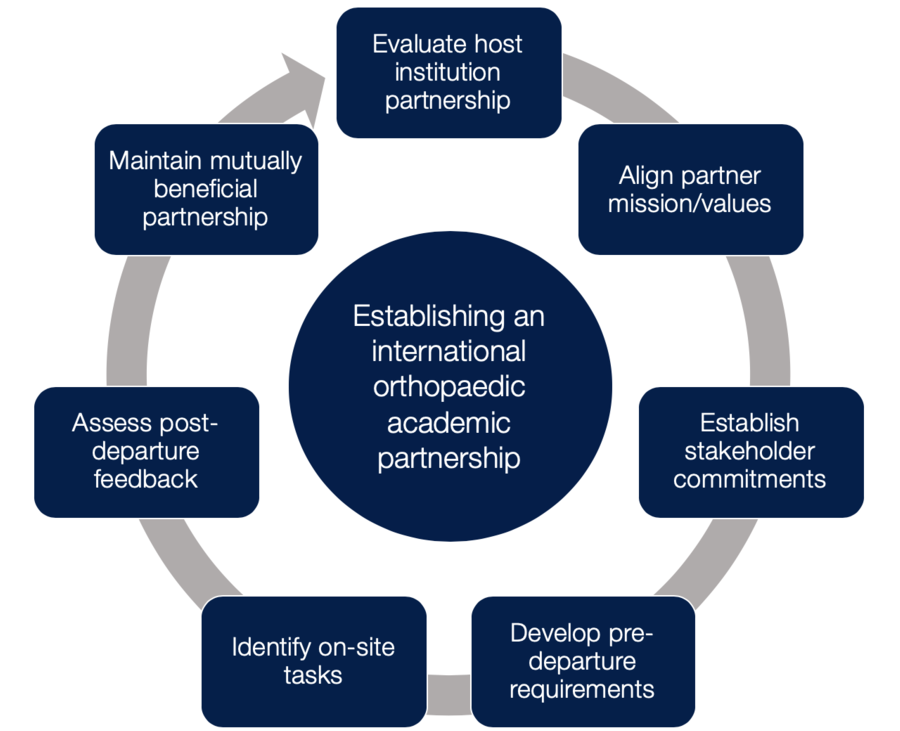PS1-05: BEST PRACTICE GUIDELINES FOR ESTABLISHING AN INTERNATIONAL ORTHOPAEDIC ACADEMIC PARTNERSHIP BETWEEN NORTH AMERICAN INSTITUTIONS AND PARTNERS IN LOW- AND MIDDLE-INCOME COUNTRIES
Patrick Albright, Syed Ali, Alexandra Paul, David Wassef, David W Shearer, Sanjeev Sabharwal; University of California-San Francisco
Introduction: There is growing interest among orthopaedic surgery residents and programs in North America to pursue clinical rotations in resource-limited settings. However, there are no current best practice guidelines for creating a mutually beneficial international orthopaedic academic partnership between institutions in North America and their partners in lower-middle income countries (LMICs). This review evaluates surgical subspecialty literature to identify guidelines for establishing an international academic surgical partnership. The guidelines are used to make recommendations for international orthopaedic surgery partnerships in accordance with ACGME requirements.
Methods: A systematic search strategy of MEDLINE indexed journals identified articles pertinent to international resident surgical rotations. Title/abstract screening was completed for articles pertaining to surgical resident academic partnerships and best practice guidelines defined by a priori inclusion and exclusion criteria: (1) international North American surgical resident rotations, (2) frameworks/guidelines for international North American surgical resident rotations, and (3) ethical frameworks/guidelines for surgical volunteer trips. Full-text article review was completed to distinguish themes associated with developing an international surgical, specifically orthopaedic, academic partnership.
Results: Initial search strategy identified 4,317 unique titles. Of these studies, 531 (12.3%) underwent title/abstract screen, and 147 (3.4%) received full text review. Common themes necessary for successfully establishing an international surgical academic partnership included: (1) Evaluating host institutions, (2) aligning with host mission/values, (3) establishing stakeholder commitments, (4) developing pre-departure curricula/requirements, (5) identifying on-site resident and faculty tasks, (6) assessing post-departure feedback, and (7) continuing partnership evaluation. Matching ACGME requirements with international surgical rotation curriculum was not mentioned in the orthopaedic literature but was identified in the general surgery, plastic surgery, urology, otolaryngology, and neurosurgical literature.
Conclusions: This is the first study to recommend guidelines for establishing a mutually beneficially international orthopaedic academic partnership based on existing best practices in the literature. Well-delineated guidelines are crucial in maximizing mutual benefits and reciprocity between visiting and host orthopaedic institutions and ensuring long-term sustainable relationships. This study provides a foundation for future prospective evaluation of the impact of international orthopaedic academic partnership among residents and faculty at North American institutions and their partners in LMICs.

